Last Updated on December 23, 2022
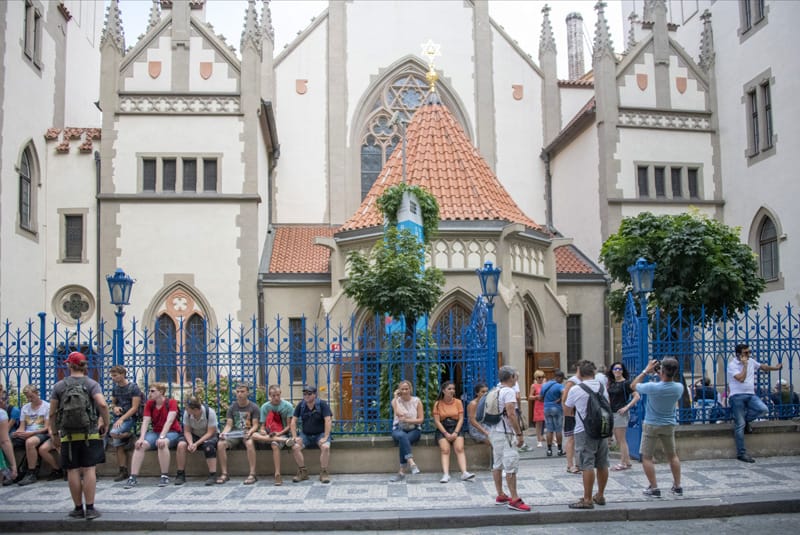
Estimated reading time: 7 minutes
By Marcia Levin
Some unique European sites strike an especially responsive chord with Jewish travelers. Although some are famous and others less know, they all share a bit of Jewish history. One might call it “Jewish Europe,” although almost all of these places are popular attractions for non-Jews, as well.
A big draw is often France, and, more specifically, Normandy, as people search for the place that marked the beginning of the end to the brutal Nazi invasion of the continent. It’s a fascinating place to visit whether you’re traveling solo, as a couple, or in a group.
And for many cruise passengers, whose ships will come close to France, those invasion beaches are also popular shore excursions. Cruise lines have put together lot of shore excursions focusing on the invasion and visits to the beaches.
But many other spots on European soil are attractive to travelers, who can explore and expose the bloody history of Nazism, as well as the paths taken by millions of Europeans to migrate to the U.S. and Canada.
Red Star Line Museum, Antwerp, Belgium
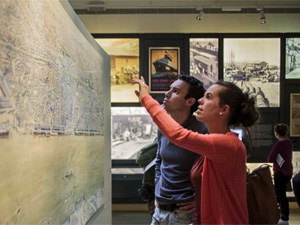
One of the interesting sites in Jewish Europe is in Antwerp, Belgium. There the Red Star Line Museum documents the history of 2 million European immigrants who made the trip from Antwerp to New York City from 1897 to 1934. They all sought a better life.
Among them was a five-year-old boy named Israel “Izzy” Berlin who became famed songwriter/composer Irving Berlin. He wrote “God Bless America” in 1918.
Red Star Museum
Montevideostraat 3
2000 Antwerp
Belgium
http://www.redstarline.be/en
@ [email protected]
Tel: +32 3 298 27 70
Open: Tuesday – Sunday 10am – 5pm
Admission: adults (25+) € 12 / 18-25 years, groups of 12 or more € 8 / under 18 years, holders of an Antwerp City Card free
Note: tickets must be purchased online
Anne Frank Museum, Amsterdam, Holland, a Renowned Site for Jewish Travelers
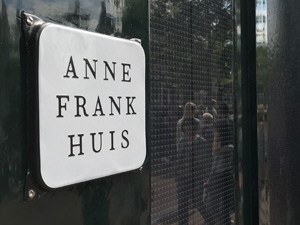
In Amsterdam, certainly one of the most popular places for Jews (and-non Jews) is the incredible Anne Frank Museum. It is undoubtedly one of the most visited travel sites in Jewish Europe.
Millions of visitors from around the globe annually come to Amsterdam to visit the site where Anne and her family hid during the Nazi occupation. Contemplating life for the family in the hidden annex is challenging for all.
Anne received a diary for her 13th birthday on June 12, 1942. Three weeks later the family went into hiding, where they lived for more than two years.
Cruise passengers can walk to the Museum from Amsterdam’s port, although a cab ride is easier. Online ticket booking is highly recommended.
Anne Frank Museum
Prinsengracht 263-267
1016 GV Amsterdam
Netherlands
www.annefrank.org
@ [email protected] (there is also a contact form on the website)
Tel: +31 20 556 7100
Open: daily 9am-5pm (check online since times may vary during the year)
Admission: adult € 14.00 / 10-17 years € 7.00 / 9 years and younger, and holders of the Museumkaart € 1.00
Note: tickets with a timed entry must be purchased online. There is no discount for holders of the “I Amsterdam” card. There are also many steep stairs in the museum.
Manchester Jewish Museum, Manchester, England
Surprisingly for some, in the 1840s immigrants from Russia and the Austro-Hungarian Empires were the first Jewish settlers in Manchester. Early cotton merchants from Holland and Germany arrived at about the same time, but by 1912 there were only five Jews in the industrial city
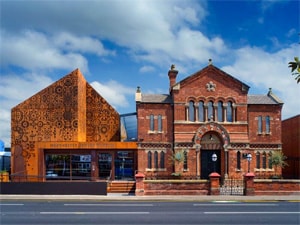
The Manchester Jewish Museum pays homage to the six thousand refuges from Nazism who settled there in the 1930s. They were later followed by concentration camp survivors and Egyptians, Hungarians and Iranians – all avoiding political situations in their homelands – who came in the1940s and 1950s.
One of the sites in Jewish Europe, it is only a 10-minute walk from Manchester Victoria train station and contains haunting personal histories, artifacts of early settlement, and ancient religious items.
Manchester Jewish Museum
190 Cheetham Hill Road
Manchester M8 8LW,
United Kingdom
www.manchesterjewishmuseum.com/
@ [email protected]
Tel:+44 161 834 9879
Open: daily 10am-5pm (last entry 4pm)
Admission: Adults £6.00 / adults 60+, students, people with disabilities, and registered unemployed £5.00 / children 5-16 £4.00 (under 5 years free) / families £4.50 per person (4-8 people, max 2 adults) / groups of 10+ £5 per person
Note: it’s highly recommended to book online for a timed-entry. American Express cards are not accepted.
Old Prague Jewish Quarter, a Renowned Site for Jewish Travelers
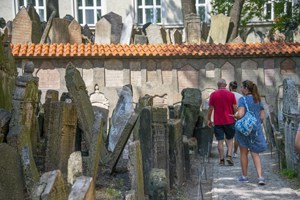
Every visitor to Prague, Jew and non-Jew alike, should visit the old Jewish Quarter of Prague. Unquestionably, it is one of the most famous places in Prague.
Also called Prague Jewish Town, it’s one of the great sites for Jewish in Jewish Europe. The Old-New Synagogue is the oldest landmark in Jewish town and is Europe’s oldest active synagogue. The Synagogue (Altneuschul,) reflects 700 years of history.
A walk through the old district with its mesmerizing cemetery, as well as the entire feeling of the area, will remain with you long after you walk away.
Old Prague Jewish Quarter
Maiselova 18
110 01 Praha 1
Czech
Tel: +420 224 800 812
www.synagogue.cz/
Theresienstadt Concentration Camp
After a 40-minute ride from Prague in the Czech Republic, on a major highway that could be the Florida or New Jersey Turnpike – complete with plazas and $4 cups of coffee – visitors come to an old 18th century army fortress.
Sprawling walkways lead to the infamous Theresienstadt Concentration Camp. The German name is Therensienstadt, Czechs use “Terezin.” The name comes from name of the mother of the emperor, Maria Theresa of Austria. It is another of the mesmerizing Jewish Europe sites for travelers of any faith.
More than 140,000 prisoners were sent to Terezin. Most were Czech Jews, but also included 40,000 from Germany, 15,000 from Austria, 500 from the Netherlands, 500 from Denmark.
Most were sent to concentration camps in Auschwitz-Birkenau where most died. It is said that 33,000 died in Terezin, many from typhus at war’s end. Terezin survivors number 17,247.
And more…
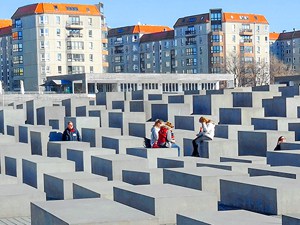
There are many more significant sites one can visit in Jewish Europe. From the German cruise port of Rostock, for example, it is possible to visit Berlin. There consider visiting the Jewish Museum, Holocuast Memorial, Book Burning Square, the Berlin Wall and Check Point Charlie.
Also, in Dublin don’t miss a stop at the Jewish Museum in that capitol city. Many people don’t realize that Ireland has a long Jewish history.
Kahal synagogue, in the Jewish quarter on the Greek island of Rhodes, is the oldest synagogue in Greece.
This is only a partial list. Many standard tours and cruises can also provide a little bit of ethnic history. Undoubtedly, online research and bookings are strongly recommended.
You may also enjoy: Traveling in Belgium – the Best Places to See / Things to Do in Prague…With a Map for a Walking Tour / The Top 10 Places in England

River cruise lines, particularly AMA Waterways, feature Jewish heritage river cruises. AMA organized five or six in 2013. Onboard these sailings, passengers have added options to tour Jewish districts, old synagogues, Jewish cemeteries and historic sites in Jewish or Nazi history. Or, passengers onboard those sailings can opt to do the regularly-planned shore excursions. The Jewish heritage river cruises are as popular with historians as they are with people focusing on their backgrounds.